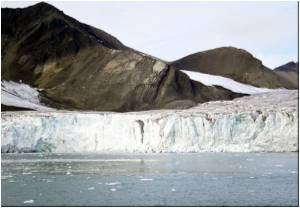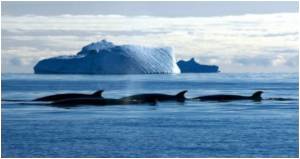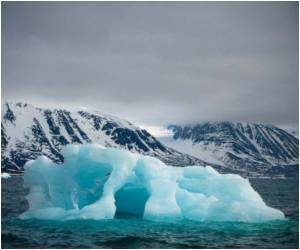
A new study combines data collected by ice buoys and NASA aircraft with historic data from ice floes staffed by Soviet scientists from the late 1950s through the early 1990s to track changes over decades.
First author Melinda Webster verified the accuracy of airborne data taken during a March 15, 2012 NASA flight over the sea ice near Barrow, Alaska. The following day she followed the same track in minus 30-degree temperatures while stabbing through the snow every two to three steps.
The authors compared data from NASA airborne surveys, collected between 2009 and 2013, with U.S. Army Corps of Engineers buoys frozen into the sea ice, and earlier data from Soviet drifting ice stations in 1937 and from 1954 through 1991. Results showed that snowpack has thinned from 14 inches to 9 inches (35 cm to 22 cm) in the western Arctic, and from 13 inches to 6 inches (33 cm to 14.5 cm) in the Beaufort and Chukchi seas, west and north of Alaska.
That's a decline in the western Arctic of about a third, and snowpack in the Beaufort and Chukchi seas less than half as thick in spring in recent years compared to the average Soviet-era records for that time of year.
The authors speculate the reason for the thinner snow, especially in the Beaufort and Chukchi seas, might be that the surface freeze-up is happening later in the fall so the year's heaviest snowfalls, in September and October, mostly fall into the open ocean.
Advertisement
The new results support a 15-year-old UW-led study in which Russian and American scientists first analyzed the historic Arctic Ocean snow measurements. That paper detected a slight decline in spring snow depth that the authors believed, even then, was due to a shorter ice-covered season.
Advertisement
Source-ANI








